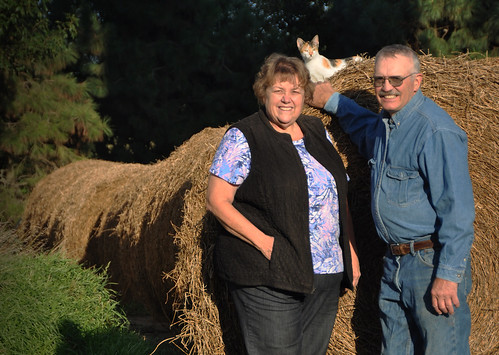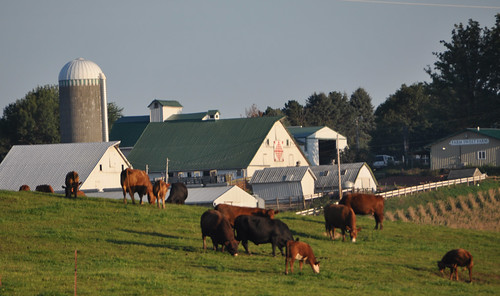
In many respects, Ron and Maria Vakulskas Rosmann’s “Farm Sweet Farm” is a typical Iowa farm. The Rosmann’s grow corn, soybeans, cattle and hogs.
But that’s where the similarities with traditional farming operations end. A certified organic producer since 1994, the 700-acre farm near Harlan, Iowa is home to a remarkable amount of diversity — above and below the ground.
“Last year, we planted 26 different species of seeds, and this is typical,” Ron said.
Farm Sweet Farm is also home to vegetative buffer strips, trees, shrubs, and shelter belts, all of which provide habitat for some 40 different species of birds that Ron said he can count on any given day.
“I think wildlife is an indicator of soil health and ecological health, and it’s important for me to see birds. Because when I see birds, then I know that we are doing things right,” he said. “With wildlife and insects we have predator species, predator-prey relationships, and it’s sort of a balance. You don’t get that balance in a mono-crop kind of agriculture. I just don’t see the numbers of species on those kinds of farms.”

Adding even more to the mix, the Rosmann’s are expanding into multi-species cover crops to grow in their fields after their cash crops have been harvested.
Why all the diversity?
“I always feel like diversity equals stability and resiliency,” Ron said. “We don’t put our eggs in one basket. We work hard all the time, but we are never overwhelmed. Now with possible climate change and our changing weather, it is really important to withstand the fluctuations of weather.”
Because organic producers cannot use pesticides, tilling the soil is often the weed-control tool of choice. But tillage can disrupt and harm soil biology.
While not completely no-till, the Rosmanns try to limit tillage operations by using rotary hoeing, which creates little soil disturbance. “It is used entirely for weed control not for any form of tillage,” said Ron.
Even with a remarkable level of conservation already applied to their farm, the Rosmanns continue to work with USDA’s Natural Resources Conservation Service, or NRCS. Through the Environmental Quality Incentives Program, or EQIP, they’ve installed wildlife habitat, native prairie, and implemented a manure management plan. And because of the high level of conservation stewardship implemented on the farm, the Rosmanns qualified for Conservation Stewardship Program, or CSP, and are re-enrolling this year, adding enhanced conservation practices.
Ron said he and his family feel good about knowing there are no antibiotics, hormones or pesticides in the foods they produce. “I think we can do our part to feed the world with our kind of system,” he said. “It takes a lot of management and thinking and creativity, but that is what makes me love it the most. It’s always interesting, always a challenge.”

